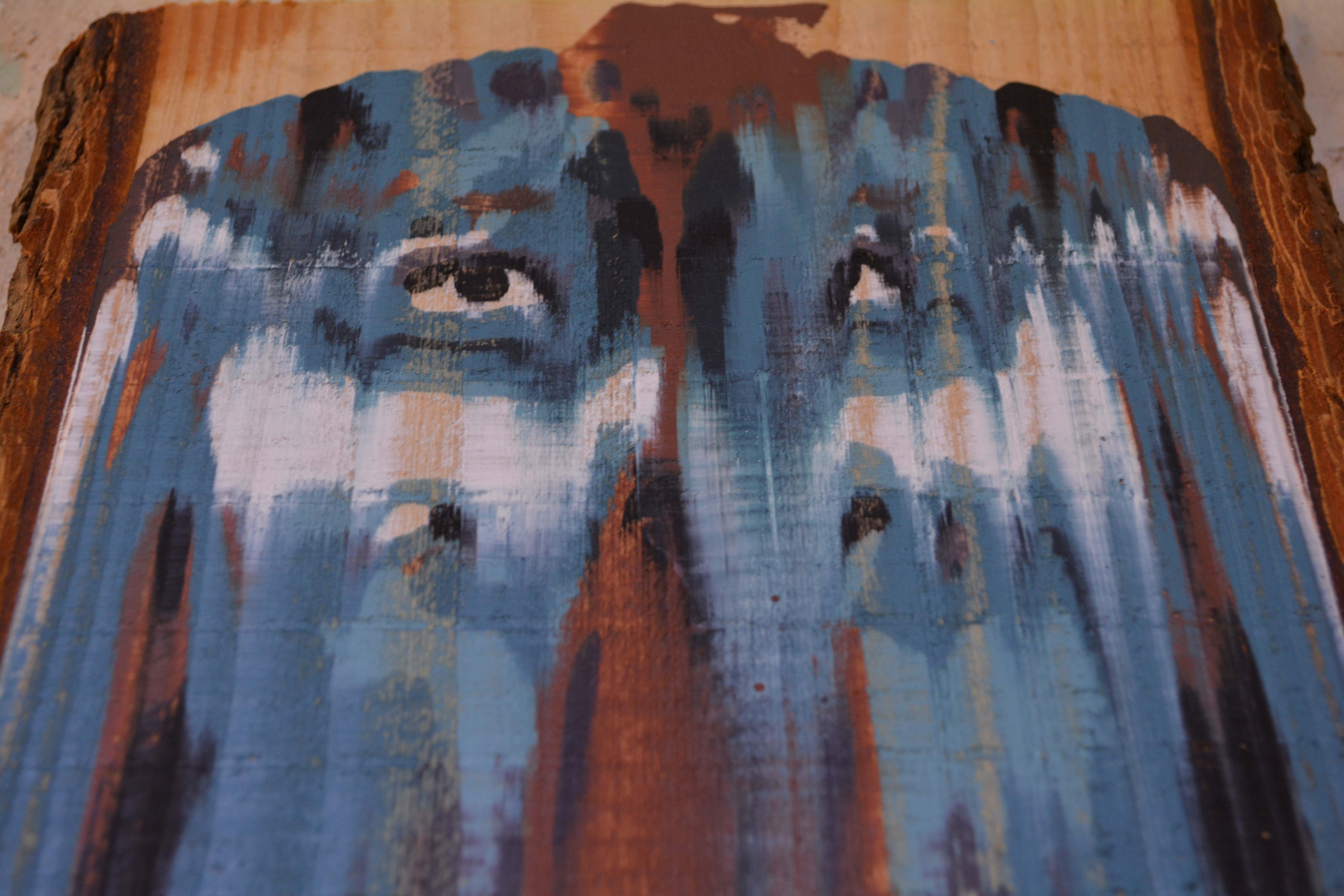The main theme of my ongoing investigation is camouflage, which is an unavoidable survival mechanism. In general, to achieve this effect, the object must adapt to the characteristics of the environment, and by that hide the features that stand out.
If we camouflage ourselves for a long period of time, consciously or subconsciously, there are harmful side-effects, some of which may be: an inconsistent personality that changes according to the ambient.
The inability of being alone that leads to dependency on a surroundings. Not knowing who you are can lead to a feeling of great inner void and emptiness. My aim is to demonstrate that the metamorphosis of a camouflage can be done without hiding who we really are.
I keep coming back to the question of the Irish philosopher Jorge Barkly, that was one of the pioneers of the existencial approach of immaterialism, that state that things exist only when are discovered.
His question was: “if a tree falls in the forest but nobody listens, did it make a sound?” I wasn’t there when the tree fell, but i have a feeling it wasn’t silent. Using the weight of the question I ask: "If I am dead inside, but no one notices, do I exist?"I've recently been attracted to moths, the night butterflies, which are such fascinating creatures.
The coloration and patterns of their upper wings are shaped by natural selection to match the patterns of the bark of the tree, on which the moths camouflage themselves. There are over 160,000 types of moths, and my current research focuses on a family of moths called the Saturniidae.
The family contains over 2300 types of species and some of the largest moths in the world. A unique characteristic of those moths are their eye-like shapes on its lower wings. When they feel a threat, they spread their upper wings, revealing the two large eyes.
That action startles the predator, giving the moth precious seconds to escape and land on the bark of a tree to camouflage, taking advantage of the fact that the patterns on its wings matching the pattern of the tree bark.
The moth creates the result of camouflage without having to change its own characteristics, nor the background, but it’s ability to obtain invisibility also due to movement and precise positioning on the tree bark.
Through nature, I try to understand the homo Sapiens in terms of social conditions and interaction. I try to penetrate conciseness and create thought provoking contemplation and emotional arousal.
Seeing that all paintings are the result of a performance, My work is a performative painting. The process is an important part of the work and of the experience, both for me as an artist and for the viewer.
The painting is no longer an object from the past, otherwise it’s living, and the end result contains movement and action in the rhythm of the flapping wings. The collection of wood planks measures about 3 m hight and about 4 m wide.
With this installation, I invite you to the forest of moths, it’s night time, there is a full moon, and the air is crisp. i hope to also give space to take a deep breath and fill your lungs with the air those trees provide.
With every liftoff of a moth, is an opportunity to stretch the time, slow it down, and let it take your breath away during this life-changing moment of escaping. when something is gone, does it disappears? How does a moth turns into a tree? How does a tree becomes a forrest?




